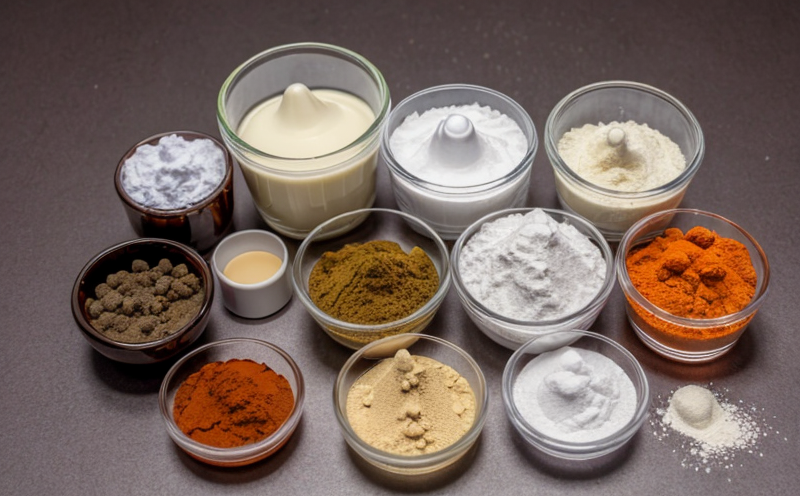Critical Micelle Concentration Testing
The critical micelle concentration (CMC) is a fundamental parameter in surfactant science and plays a crucial role in pharmaceutical formulations. It marks the point at which surfactants begin to aggregate into micelles, significantly influencing drug delivery systems' stability and effectiveness.
Surfactants are amphiphilic molecules used extensively as excipients in pharmaceuticals due to their ability to enhance solubility of poorly water-soluble compounds and improve the dispersion properties of solid drugs. Understanding CMC is essential for formulators aiming to optimize drug release, stabilize emulsions, and ensure compatibility with other formulation ingredients.
The measurement of CMC involves dissolving surfactants in a solvent system (typically aqueous) at various concentrations until stable micelles form. The point where this transition occurs defines the CMC. Accurate determination of CMC is vital for ensuring that surfactants are used efficiently and effectively within their intended applications.
Various methodologies exist to determine CMC, including conductivity methods, titration techniques, light scattering, and surface tension measurements. Each method has its advantages and limitations depending on the surfactant type and application. For instance:
- Conductivity Method: Suitable for ionic surfactants; it measures changes in ionic strength as micelles form.
- Titration Technique: Useful for both ionic and non-ionic surfactants, involving titrating the solution with a strong base or acid until a change in pH is noted.
- Light Scattering: Provides direct measurement of particle size distribution but can be challenging to interpret due to other factors contributing to scattering.
- Surface Tension Measurements: Best suited for non-ionic surfactants, where changes in surface tension indicate micelle formation.
In pharmaceutical testing, the choice of CMC measurement method depends on the specific surfactant and its intended use. For instance, ionic surfactants like sodium dodecyl sulfate (SDS) are often tested using conductivity methods due to their strong ionic interactions. Non-ionic surfactants such as polyethylene glycol ethers may require surface tension measurements for accurate assessment.
At Eurolab, we employ state-of-the-art instrumentation and experienced scientists to perform these tests rigorously according to international standards like ISO and ASTM. Our comprehensive approach ensures precise determination of CMC values that are critical for pharmaceutical development and quality assurance.
Benefits
Accurate CMC testing offers numerous benefits in the context of pharmaceutical excipients:
- Enhanced Drug Delivery: Understanding CMC helps in designing formulations that enhance drug solubility and bioavailability.
- Improved Stability: Knowledge of CMC aids in stabilizing emulsions and suspensions, ensuring longer shelf life and consistent performance.
- Better Compatibility: Ensures surfactants are optimally chosen to work harmoniously with other formulation ingredients without adverse interactions.
- Regulatory Compliance: Rigorous testing ensures adherence to regulatory requirements, facilitating smoother product approvals.
- Innovation Opportunities: Insights into CMC can lead to the discovery of novel surfactant combinations and formulations.
- Cost Efficiency: Precise determination of optimal surfactant concentrations minimizes waste and reduces formulation costs.
By leveraging our expertise in CMC testing, pharmaceutical companies can enhance their product quality and efficiency while meeting stringent regulatory standards.
Eurolab Advantages
Eurolab stands out in providing Critical Micelle Concentration Testing through several key advantages:
- Accurate and Precise Results: Leveraging advanced analytical instruments and techniques, ensuring reliable CMC values.
- Dedicated Expertise: Our team of chemists specializes in pharmaceutical testing, offering deep knowledge and experience tailored to your specific needs.
- Compliance with Standards: All tests are conducted adhering to international standards such as ISO 16092 for surfactants.
- Customized Solutions: Tailored approaches that meet the unique requirements of each client, whether it's a small startup or a large pharmaceutical company.
- State-of-the-Art Facilities: Equipped with cutting-edge equipment to handle diverse samples and complex analyses efficiently.
- Rapid Turnaround Times: Efficient processes ensure timely delivery of results without compromising quality.
- Comprehensive Reporting: Detailed reports that not only provide CMC values but also interpret their significance for your formulation.
Partnering with Eurolab guarantees you receive top-tier service and support in understanding and optimizing the role of surfactants within your pharmaceutical products.
Customer Impact and Satisfaction
The impact of accurate CMC testing on customer satisfaction cannot be overstated. By providing reliable data, Eurolab helps pharmaceutical companies:
- Avoid Regulatory Issues: Ensuring compliance with stringent regulatory standards.
- Reduce Development Costs: Minimizing trial and error by getting it right the first time.
- Improve Product Quality: Enhancing drug delivery systems, ensuring better patient outcomes.
- Promote Innovation: Facilitating the development of new formulations that meet evolving market demands.
- Enhance Reputation: Building trust with clients and stakeholders by delivering high-quality, accurate results.
- Increase Efficiency: Streamlining processes, leading to faster time-to-market for new products.
We strive to exceed customer expectations through our commitment to quality, innovation, and personalized service. Your satisfaction is our priority, and we take pride in delivering solutions that drive success in your pharmaceutical testing endeavors.





